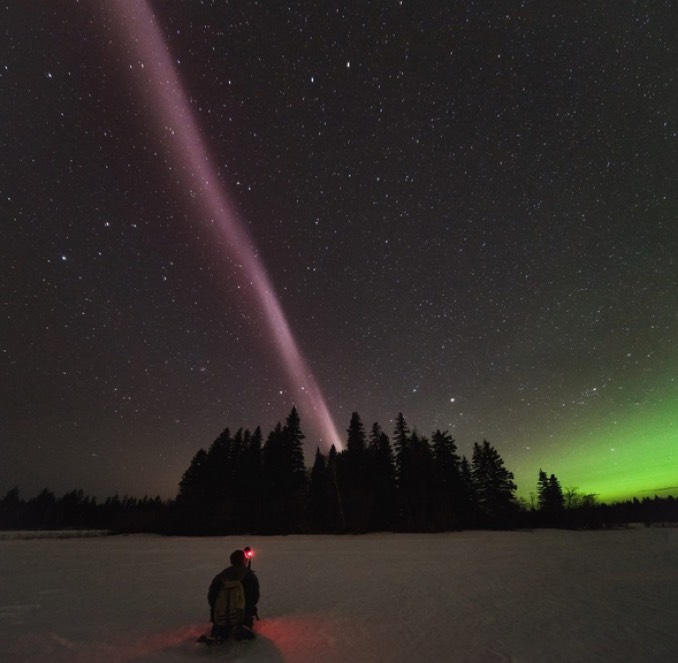
Mysterious beams of purplish-white light occasionally seen shining in the atmosphere by aurora watchers were initially believed to be a new type of auroral display when scientists first began investigating the phenomenon in 2016.
As it turns out, the unusual beams, dubbed STEVE events in reference to the animated movie “Over the Hedge,” are not generated by charged particles from the sun crashing into Earth’s atmosphere along magnetic field lines, the mechanism responsible for the northern and southern lights.
Reviewing ground-based photography of a 2008 STEVE event over eastern Canada, along with data from a polar-orbiting environmental satellite that happened to be passing overhead, the researchers found no evidence of charged-particles, indicating a different mechanism must be responsible for the light.
“Our main conclusion is that STEVE is not an aurora,” said Bea Gallardo-Lacourt, a physicist at the University of Calgary in Canada and lead author of the new study in Geophysical Research Letters. “So right now, we know very little about it. And that’s the cool thing, because this has been known by photographers for decades. But for the scientists, it’s completely unknown.”
Joe Borovsky, a space physicist at the Space Science Institute in Los Alamos, New Mexico, who was not involved in the research, said the phenomenon “is really interesting because we haven’t figured it out, and when you get a new problem, it’s always exciting. It’s like you think you know everything, and it turns out you don’t.”
Amateur aurora photographers first called the STEVE events to the attention of scientists two years ago. A Facebook group known as the Alberta Aurora Chasers reported occasionally seeing thin streams of purple-white light running from east to west in the night sky. The lights were only visible a few times each year and showed up closer to the equator than auroral displays.
The amateurs dubbed the phenomenon STEVE, but researchers later suggested turning the name into an acronym for Strong Thermal Emission Velocity Enhancement.
Scientists have concluded STEVE is an optical phenomenon they call “skyglow.” They plan additional research to find out whether streams of fast ions and electrons in the ionosphere are generating the light or if it is somehow produced higher in the atmosphere.



